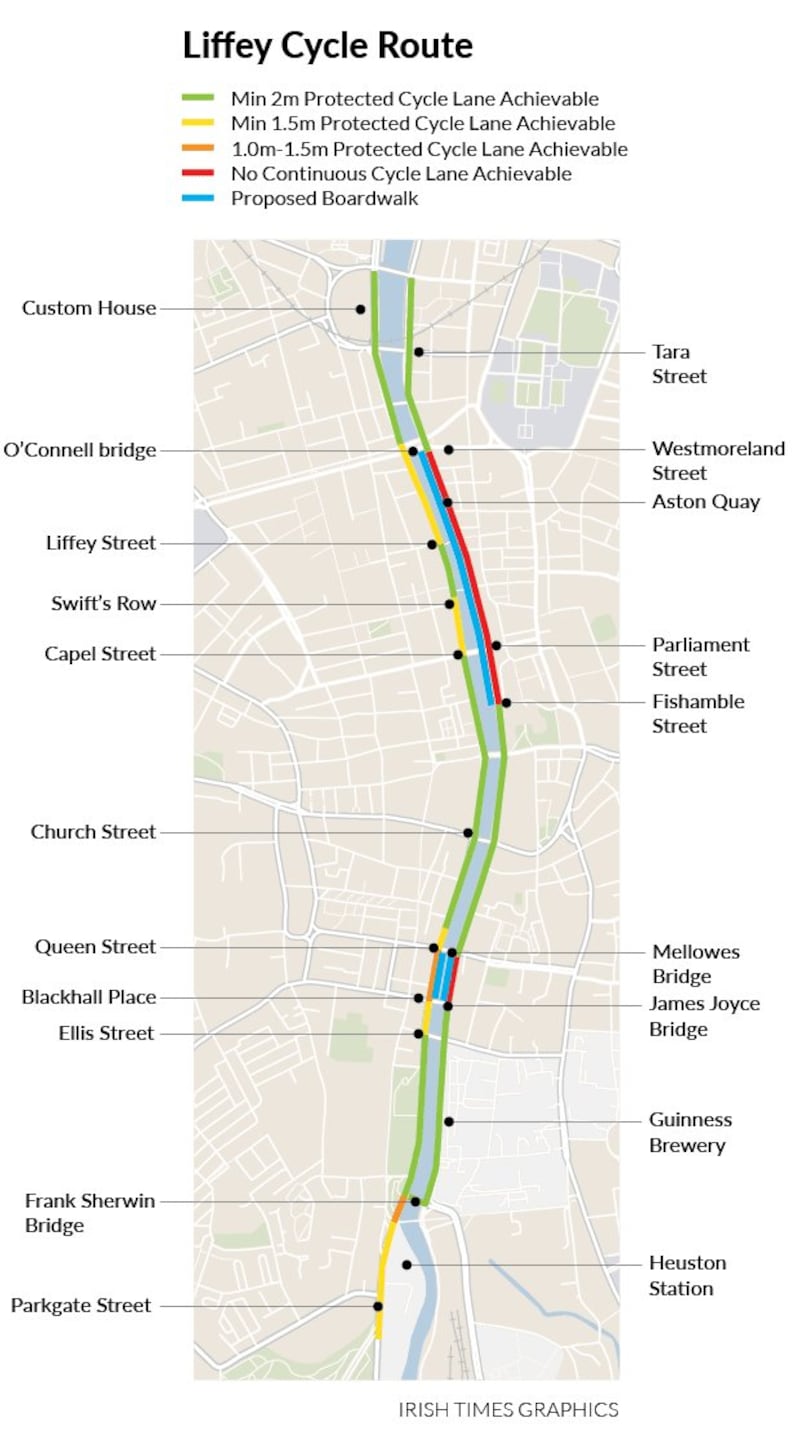After seven years of Liffey cycle scheme stalemate, cyclists and campaign groups were for the most part relieved, if not totally delighted, when last April the National Transport Authority (NTA) announced its chosen route.
Any joy was short-lived, however, when it emerged a few months later the project would not be in place until 2024 at the earliest.
Dublin’s cyclists must be used to disappointment by now, particularly when it comes to the Liffey scheme.
It’s hard to fathom how a 5km cycle route could possibly take so long to install, given almost half of it, the section from the Custom House heading east, is already done. Also, it just needs to run on an existing road beside a river – essentially a straight line.
For five years Dublin City Council couldn't manage to design a scheme everyone liked, and so failed to choose any scheme at all.
Quays diversions
The council’s transportation department presented eight different “preferred routes” for the path from 2012-2017, but couldn’t secure the sanction of councillors for any of them. Some were discarded because they would inconvenience drivers with diversions off the quays, others would have taken cyclists away from the riverside for a distance, which campaigners felt detracted from the integrity of a “Liffey” cycle route.
Some of the eight options were sensible and workable, some were terrible and shoddily planned. The worst being the one, proposed in 2015, that involved diverting buses through an apartment block under construction in Smithfield. One of the few apartment complexes being built in the city at the time, it is now completed and occupied.
In 2017, after more than €360,000 had been spent on the project, the NTA called a halt and said it would take over the decision-making. It took them until 2019 to come up with a plan, essentially the same as one discounted by the council several years ago that had cycle lanes on both sides of the river.
Route trial
Some campaigners weren’t happy with this option, favouring a two-way northside-only route, but were even less happy when it emerged the project wouldn’t be in place until 2024. Last month, they called for the city council to trial the two-way route for eight to 12 months.
But the council, showing unexpected backbone as far as this project is concerned, has decided to put in place as much of the NTA’s plan as possible, barring the expensive engineering works such as boardwalks; and instead of a short trial, keep those measures in place until the NTA project is completed.
It’s not perfect, and it is particularly disappointing large sections of the south quays are excluded. However, given a recent Garda report found the quays to be among of the most dangerous roads in the State, it is very encouraging the council is stepping up and putting a basic framework in place, until the NTA gets around to building on it.













